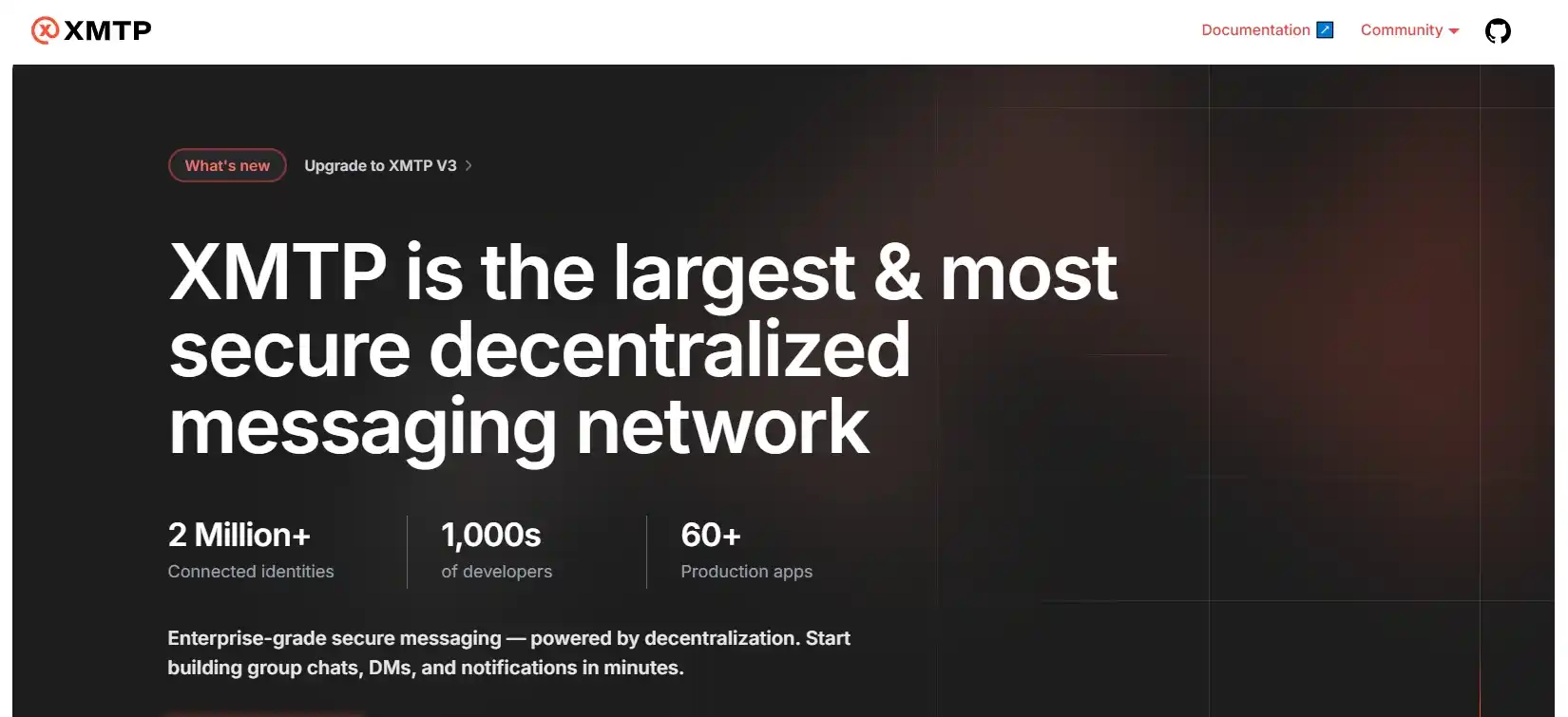Modern messengers like Telegram or WhatsApp are controlled by centralized organizations, creating privacy risks and limiting communication freedom. The XMTP protocol (Extensible Message Transport Protocol) offers a fundamentally different approach — a decentralized messaging system built on blockchain.
XMTP enables users to interact without intermediaries, providing end-to-end encryption and compatibility between different applications. This opens new possibilities for Web3, including direct wallet-to-wallet communications, notifications from dApps, and secure channels for decentralized services.
Contents:
- What is XMTP and how does it work?
- Protocol architecture: key components
- Security and privacy
- Protocol usage in Web3 ecosystem
- Prospects and challenges of XMTP development
- Conclusion
What is XMTP and how does it work?
XMTP (Extensible Message Transport Protocol) is an open messaging protocol specifically designed for decentralized applications. Unlike traditional messengers, it doesn't rely on a single server but uses a distributed network of nodes for data transmission.
The core idea of XMTP is to provide a universal standard for Web3 communications. Users can send messages through different clients while maintaining full control over their data. The protocol supports end-to-end encryption, and identification occurs through cryptographic keys, eliminating the need for email or phone registration.
One of XMTP's main advantages is compatibility. Developers can integrate it into their applications, enabling interaction between users even when they use different wallets or dApps. This makes the protocol a key element of decentralized internet infrastructure.
Protocol architecture: key components
XMTP is designed as a modular and scalable system capable of supporting millions of users without a single point of failure. Its architecture combines several interconnected elements that ensure reliable message delivery and compatibility between different applications.
Main XMTP components:
- Node network (nodes) — distributed servers responsible for routing and temporary metadata storage.
- Client SDKs — libraries for protocol integration into wallets, dApps and other Web3 services.
- Decentralized identification — account binding to blockchain addresses instead of emails or phones.
- Cross-protocol gateways — tools for interaction with other networks (e.g., Ethereum or IPFS).
Thanks to this structure, XMTP remains a flexible and adaptive solution. Developers can easily add new features like group chat support or verified messages from smart contracts without disrupting the entire system. Moreover, the absence of centralized control makes the protocol resistant to censorship and external attacks.
Security and privacy
The XMTP protocol rethinks data protection by offering a fundamentally new privacy model for Web3 communications. Its architecture eliminates key vulnerabilities of traditional messengers, giving users full control over their data.
Core security principles:
- End-to-end message encryption
- Anonymous identification via crypto wallets
- Decentralized metadata storage
- Spam protection through economic mechanisms
These features enable XMTP to provide privacy levels unattainable by centralized platforms. At the same time, the system maintains usability, allowing easy integration of secure communications into any Web3 application.
Protocol usage in Web3 ecosystem
XMTP is being actively integrated into various blockchain projects, becoming a standard for secure communications in decentralized environments. The protocol enables new interaction possibilities between users, dApps and services, eliminating the need for centralized intermediaries.
| Use case | XMTP advantages | Usage examples |
|---|---|---|
| Decentralized wallets | Direct user-to-user messaging | Coinbase Wallet, Rainbow |
| dApp notifications | Instant transaction and event alerts | Uniswap, Aave |
| DAO governance | Secure channels for voting and discussions | MakerDAO, Compound |
| NFT and digital assets | Deal confirmation and collection verification | OpenSea, Rarible |
Thanks to its flexibility, XMTP enables unique use cases unavailable in traditional messengers. For example, projects can implement verified support chats or automated notifications from smart contracts. As the Web3 ecosystem grows, the protocol's application scope will continue expanding.
Prospects and challenges of XMTP development
XMTP stands on the verge of mass adoption, but its development faces several challenges. The main obstacle is competition with convenient centralized messengers that most users are accustomed to. Technical limitations like transaction fees for messages may also slow adoption.
Nevertheless, growing demand for Web3 solutions creates favorable conditions for the protocol. Integration with major crypto projects and the emergence of user-friendly clients could accelerate its spread. XMTP's success will depend on balancing decentralization with usability.
Conclusion
XMTP represents a significant step in the evolution of internet communications, offering an alternative to centralized messengers. With its decentralized architecture, cryptographic protection, and compatibility with various blockchain applications, the protocol opens new possibilities for private and secure communication.
While XMTP adoption is still in early stages, its role in the Web3 ecosystem will only grow. With increasing integrations and improved user experience, the protocol could become the standard for decentralized communications, ensuring freedom and privacy in the digital world.






